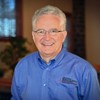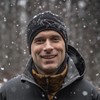It was almost a joke when my mentor, the pioneer missionary Dr. Ernie Steury, said with a big smile, “Dave, while you are on deputation, why don’t you find the money and people to build our hydroelectric plant?”
“Sure,” I responded with a trace of sarcasm. The dream of powering Tenwek Hospital off the power of the 42-foot waterfall below the hospital went back more than 50 years to when the first clinic was opened on the site. Over the intervening years, two attempts were made but both failed due to local politics, lack of expertise and funding.
There was no doubt it was needed. We could only fuel our diesel generator 11 hours a day and even then it drained 25 percent of the 125-bed hospital’s annual income. Patients died for lack of lights at night. We could only power one incubator with the small 2,500-watt night generator so after it was filled with three premature babies, we had to decide who lived and who died if a fourth baby needed it.
Ernie’s comment was also humorous. I had only been on the mission field three years. Not only did I have to raise our financial support and get my feet wet again in American medicine during our furlough, but also I knew nothing about designing, funding and building a hydroelectric plant in the bush of Africa.
But God specializes in the impossible.
A few weeks after we arrived home, the wife of a resident who had rotated with us unexpectedly showed up at the door early one morning and said, “God told me to come over this morning and tell you that there is a civil engineer in town from HCJB and he helped build their hydroelectric plant in Ecuador. I remember that was a dream for Tenwek.” She had her baby on her hip and didn’t even come in, but turned and hurried home, her task done.
After a phone call later that August morning, I was setting down with Bruce Rydbeck. An hour later, we were on the phone with Hugh McKay, a Christian engineer at Duke Power, one of only a handful of U.S. companies that designed and built their own hydro systems. By that evening, a message had been sent to Kenya requesting information he needed for a preliminary feasibility report. A month later, I had that report in my hands and I was sending out proposals to foundations asking for funding. God was busy and I was trying to keep up!
The first small amount of money came in at the last minute to fund a site visit for Hugh and a couple of other engineers at the end of November. They came back enthusiastic about the potential and started creating the design. All we needed was $800,000 (a lot in 1985!). My first half dozen proposals seemed to have come up dry. So I sent out 48 letters of enquiry to other foundations and more proposals. Disappointingly, we didn’t raise another penny by the time we were scheduled to return to Tenwek.
We prayed and sensed God’s prompting to move forward in faith.
Bruce wanted to help and his mission offered to lend him to us for a year. We had enough money to get him and his family to Kenya; so believing God would supply, they moved. With the little money left, we hired local men to use pick axes and shovels to widen the path down to the base of the falls.
Finally, we were two days away from running out of money and laying everyone off. We had proceeded by faith but it looked like we were stymied. And then I got a call from the World Vision director for Kenya.
Seven months earlier, I was at a missions conference seven months earlier and asked the World Vision rep setting up a display table next to mine whether they helped with a project like we envisioned. He said no, they did child sponsorship. All the same, I wrote a VP at World Vision who offered little hope but said I should visit the World Vision office in Kenya when we returned and apply there.
I had done that soon after our arrival, but their country director said a positive response was extremely unlikely. He sounded shocked when he called! He had just received a check for us from his home office for $50,000. He asked if he could fly out the next day to hand it to us in person! Over the next year, just when we needed it, we got another portion of the $800,000 until it all came in.
The authorities in Kenya didn’t want to give us a construction permit. No private group had ever built a 320-kilowatt hydro before in the country. So we asked for a change in our electrical generating permit to allow us to use hydropower as a source. We then took that permit to the civil engineering authorities and told them Kenya Power and Light had already endorsed our project. Miraculously, they gave us the permit we needed!
God sent a contractor from Alabama and another one from Australia. A master mechanic able to jury-rig anything from his experience during World War II joined us from Canada. HCJB loaned us a project manager from Ireland and an electrical engineer from Ecuador. God assembled a team from all points of the globe perfectly equipped to meet our needs.
It wasn’t easy. We were in the “bush,” 35 miles from the nearest paved road. We had to build a dam more than 150 feet long with a half-yard concrete mixer like you would use to pour a sidewalk. Sometimes we poured for 36 hours straight with lines of men bringing sand, cement, gravel and water to the machine with another line of men on the other side pushing wheel barrows full of concrete to the dam site. We hired hundreds of men to collect stones from the river and make gravel by hand cracking the rocks with hammers. We felt like we were building the pyramids.
We built our own crane on the back of an old bulldozer to lift the penstock pipes into place. They were the largest diameter pipes made in Kenya. The first time we tried the lift, the bulldozer turned over. The next time around, we added more counterweights and succeeded. God provided a man who had done the intricate end-to-end welds on the Alaskan pipeline that we needed to join the penstock sections together. A parastatal foundation from Germany donated the Ossberger turbine, generator and control systems. They were the only type in the world that could efficiently generate electricity with our highly variable river flow. Less than a year after we began, the dam and powerhouse were completed. A couple of months later, the equipment arrived and was installed.
I still remember the day we turned on the lights. Normally our lights blinked at 8:55 p.m. and the generator turned off five minutes later. That night, we found ourselves up after midnight because we forgot to go to bed! Our house and the hospital shone brightly in the African night!
The hospital was transformed. The money we saved on fuel enabled us to fund a desperately needed nursing school, greatly improving our patient care. We could now power our incubators, suction machines, oxygen concentrators and other lifesaving equipment. We could dry surgical drapes in electric dryers during the rainy season. What we previously unsolvable obstacles to better patient care were easily overcome. We had power!
Recently, I returned to Tenwek and took a group to tour the powerhouse and dam. More than 26 later, the turbines still hum and the lights still shine as testimonies to the fact that God specializes in the impossible as we step o
“Sure,” I responded with a trace of sarcasm. The dream of powering Tenwek Hospital off the power of the 42-foot waterfall below the hospital went back more than 50 years to when the first clinic was opened on the site. Over the intervening years, two attempts were made but both failed due to local politics, lack of expertise and funding.
There was no doubt it was needed. We could only fuel our diesel generator 11 hours a day and even then it drained 25 percent of the 125-bed hospital’s annual income. Patients died for lack of lights at night. We could only power one incubator with the small 2,500-watt night generator so after it was filled with three premature babies, we had to decide who lived and who died if a fourth baby needed it.
Ernie’s comment was also humorous. I had only been on the mission field three years. Not only did I have to raise our financial support and get my feet wet again in American medicine during our furlough, but also I knew nothing about designing, funding and building a hydroelectric plant in the bush of Africa.
But God specializes in the impossible.
A few weeks after we arrived home, the wife of a resident who had rotated with us unexpectedly showed up at the door early one morning and said, “God told me to come over this morning and tell you that there is a civil engineer in town from HCJB and he helped build their hydroelectric plant in Ecuador. I remember that was a dream for Tenwek.” She had her baby on her hip and didn’t even come in, but turned and hurried home, her task done.
After a phone call later that August morning, I was setting down with Bruce Rydbeck. An hour later, we were on the phone with Hugh McKay, a Christian engineer at Duke Power, one of only a handful of U.S. companies that designed and built their own hydro systems. By that evening, a message had been sent to Kenya requesting information he needed for a preliminary feasibility report. A month later, I had that report in my hands and I was sending out proposals to foundations asking for funding. God was busy and I was trying to keep up!
The first small amount of money came in at the last minute to fund a site visit for Hugh and a couple of other engineers at the end of November. They came back enthusiastic about the potential and started creating the design. All we needed was $800,000 (a lot in 1985!). My first half dozen proposals seemed to have come up dry. So I sent out 48 letters of enquiry to other foundations and more proposals. Disappointingly, we didn’t raise another penny by the time we were scheduled to return to Tenwek.
We prayed and sensed God’s prompting to move forward in faith.
Bruce wanted to help and his mission offered to lend him to us for a year. We had enough money to get him and his family to Kenya; so believing God would supply, they moved. With the little money left, we hired local men to use pick axes and shovels to widen the path down to the base of the falls.
Finally, we were two days away from running out of money and laying everyone off. We had proceeded by faith but it looked like we were stymied. And then I got a call from the World Vision director for Kenya.
Seven months earlier, I was at a missions conference seven months earlier and asked the World Vision rep setting up a display table next to mine whether they helped with a project like we envisioned. He said no, they did child sponsorship. All the same, I wrote a VP at World Vision who offered little hope but said I should visit the World Vision office in Kenya when we returned and apply there.
I had done that soon after our arrival, but their country director said a positive response was extremely unlikely. He sounded shocked when he called! He had just received a check for us from his home office for $50,000. He asked if he could fly out the next day to hand it to us in person! Over the next year, just when we needed it, we got another portion of the $800,000 until it all came in.
The authorities in Kenya didn’t want to give us a construction permit. No private group had ever built a 320-kilowatt hydro before in the country. So we asked for a change in our electrical generating permit to allow us to use hydropower as a source. We then took that permit to the civil engineering authorities and told them Kenya Power and Light had already endorsed our project. Miraculously, they gave us the permit we needed!
God sent a contractor from Alabama and another one from Australia. A master mechanic able to jury-rig anything from his experience during World War II joined us from Canada. HCJB loaned us a project manager from Ireland and an electrical engineer from Ecuador. God assembled a team from all points of the globe perfectly equipped to meet our needs.
It wasn’t easy. We were in the “bush,” 35 miles from the nearest paved road. We had to build a dam more than 150 feet long with a half-yard concrete mixer like you would use to pour a sidewalk. Sometimes we poured for 36 hours straight with lines of men bringing sand, cement, gravel and water to the machine with another line of men on the other side pushing wheel barrows full of concrete to the dam site. We hired hundreds of men to collect stones from the river and make gravel by hand cracking the rocks with hammers. We felt like we were building the pyramids.
We built our own crane on the back of an old bulldozer to lift the penstock pipes into place. They were the largest diameter pipes made in Kenya. The first time we tried the lift, the bulldozer turned over. The next time around, we added more counterweights and succeeded. God provided a man who had done the intricate end-to-end welds on the Alaskan pipeline that we needed to join the penstock sections together. A parastatal foundation from Germany donated the Ossberger turbine, generator and control systems. They were the only type in the world that could efficiently generate electricity with our highly variable river flow. Less than a year after we began, the dam and powerhouse were completed. A couple of months later, the equipment arrived and was installed.
I still remember the day we turned on the lights. Normally our lights blinked at 8:55 p.m. and the generator turned off five minutes later. That night, we found ourselves up after midnight because we forgot to go to bed! Our house and the hospital shone brightly in the African night!
The hospital was transformed. The money we saved on fuel enabled us to fund a desperately needed nursing school, greatly improving our patient care. We could now power our incubators, suction machines, oxygen concentrators and other lifesaving equipment. We could dry surgical drapes in electric dryers during the rainy season. What we previously unsolvable obstacles to better patient care were easily overcome. We had power!
Recently, I returned to Tenwek and took a group to tour the powerhouse and dam. More than 26 later, the turbines still hum and the lights still shine as testimonies to the fact that God specializes in the impossible as we step o

















